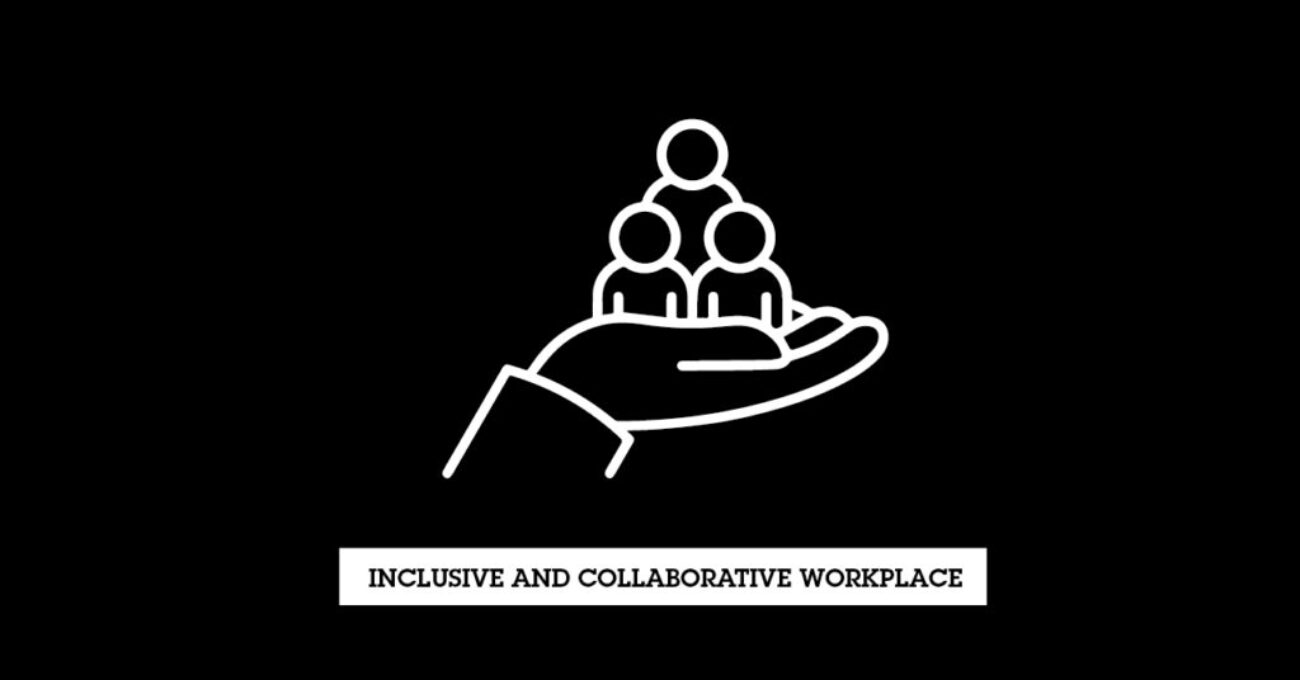Striving for HARMONY: How the HARMONY MODEL Can Help Your Team Succeed
Read Time: 8 Minutes
Introduction
In today’s diverse workplace, being an inclusive and decisive manager is more important than ever before. With the increase in globalization, remote work, and cross-functional teams, managers need to have a multi-lateral approach that values the input of all team members, no matter their level or department. This approach involves two critical components: lateral involvement and bi-lateral accountability.
This blog will help find harmony in the work place
Discover how the HARMONY Model promotes DEI and collaboration in the workplace. Learn how lateral involvement and bi-lateral accountability lead to better decision-making and innovation.
![]()
What is The HARMONY Model?
HARMONY stands for: Harnessing All Resources for Maximizing Optimal Networking and Yield.
The HARMONY Model represents a powerful approach to optimizing networking and productivity by harnessing all available resources. At its core lies a philosophy of inclusiveness, which fosters active involvement of all team members in the decision-making process and emphasizes accountability in task completion. This model consists of two critical components, namely Lateral Involvement and Bi-Lateral Accountability, which work together in ensuring its success.
Lateral involvement involves involving teams in problem-solving meetings and being present in senior meetings. By inviting different members of the team to participate, you can gain insight from different perspectives, which can lead to more creative and effective solutions. This approach also helps team members feel valued and heard, which can increase their motivation and engagement.


Bi-lateral accountability is about creating a clear chain of command where everyone knows who is responsible for making decisions and enforcing them. This approach ensures that everyone is accountable for their actions and decisions. It also helps prevent confusion and ensures that everyone is working towards the same goals.
Why The HARMONY Model is Crucial for Companies Prioritizing DEI in the Workplace
The HARMONY Model is critical for companies that prioritize diversity, equity, and inclusion (DEI) in the workplace. The model emphasizes both lateral involvement and bi-lateral accountability, creating an inclusive and collaborative workplace culture that leverages the diverse perspectives and experiences of team members to drive better decision-making, problem-solving, and innovation.
The HARMONY Model not only helps companies address the challenges of remote work, globalization, and cross-functional teams, but it also promotes a culture of collaboration and open communication. This fosters a sense of belonging and shared purpose among team members, resulting in improved team cohesion, stronger relationships, and enhanced organizational resilience.
By implementing the HARMONY Model, companies can create a culture of trust, respect, and accountability that values the input of all team members, regardless of their level or department. This approach can lead to higher employee engagement and satisfaction, increased customer loyalty, and improved overall business performance. Ultimately, the HARMONY Model is essential for companies that want to build a competitive advantage in today’s diverse and complex business environment.
Through lateral involvement and bi-lateral accountability business can succeed!
Lateral involvement and bi-lateral accountability are important to businesses because they foster a culture of collaboration, open communication, and accountability. When all team members are encouraged to contribute their perspectives and expertise, it can lead to more creative and effective solutions to business challenges. By involving team members in decision-making processes, they feel valued and heard, which can increase their motivation and engagement.
Similarly, bi-lateral accountability helps ensure that everyone is accountable for their actions and decisions, which helps prevent confusion and ensures that everyone is working towards the same goals. When everyone knows their roles and responsibilities, and who they report to, it helps prevent misunderstandings and ensures that everyone is working towards the same objectives.
Overall, these practices can lead to better team performance, increased engagement, and a more inclusive and collaborative workplace culture. In turn, this can lead to better business outcomes and increased success.
How do you implement the HARMONY Model?
To effectively implement the HARMONY Model, it is important to establish a culture of trust and open communication. Team members need to feel comfortable sharing their thoughts and ideas without fear of retribution. Managers need to be open to feedback and willing to listen to the input of others.
One way to establish this culture is to create a safe space for team members to share their thoughts and ideas. This can be done through regular team meetings, one-on-one meetings with managers, or through anonymous suggestion boxes. By creating this safe space, team members can feel comfortable sharing their thoughts and ideas, which can lead to more effective decision-making and problem-solving.
Another way to establish this culture is to encourage feedback and input from all team members. This can be done through regular surveys or suggestion boxes. By encouraging feedback, managers can gain valuable insights into how their team is functioning and identify areas for improvement.
Implement The HARMONY Model for your Team
Step 1: Education
Start by familiarizing yourself and your team with the concept of The HARMONY Model. Explain the two critical components of the model, lateral involvement and bi-lateral accountability, and how they can benefit the team.


Step 2: Assess Your Team’s Current Culture
Before implementing The HARMONY Model, it’s important to understand your team’s current culture.
- Are team members encouraged to share their thoughts and ideas, or is there a culture of silence?
- Do team members know who is responsible for making decisions and enforcing them, or is there confusion about roles and responsibilities?
Conduct a survey or hold a team meeting to get a better understanding of your team’s current culture.
Step 3: Establish a Safe Space
Create a safe space where team members feel comfortable sharing their thoughts and ideas without fear of retribution. This could be through regular team meetings, one-on-one meetings with managers, or through anonymous suggestion boxes.


Step 4: Create Cross-Functional Teams
Establish cross-functional teams to work together on specific projects or initiatives. These teams should be made up of members from different departments or levels within the organization. By working together, team members can learn from each other and share their knowledge and expertise.Step 5: Establish Clear Roles and Responsibilities
Define clear roles and responsibilities for each team member. This approach ensures that everyone knows what is expected of them and who they report to. It also helps prevent misunderstandings and ensures that everyone is working towards the same goals.


Step 6: Hold Regular Team Meetings
Hold regular team meetings where all team members are encouraged to participate. During these meetings, team members can share updates, ask questions, and provide feedback. This approach helps create a culture of collaboration and open communication, which can improve team performance and effectiveness.Key Takeaways
- HARMONY MODEL is a multi-lateral technique for becoming an inclusive and decisive manager.
- The technique involves two key parts: Lateral Involvement and Bi-lateral Accountability.
- Lateral Involvement emphasizes the importance of including everyone in problem-solving and decision-making meetings, regardless of their position in the organization.
- Bi-lateral Accountability ensures that there is a clear chain of command and accountability for decisions made.
- The HARMONY MODEL emphasizes the need for a unified team that works together towards common goals and objectives.
- By promoting inclusivity and collaboration, the HARMONY MODEL can improve team communication, problem-solving, and decision-making.
- The HARMONY MODEL can help build trust and confidence within teams by encouraging transparency, accountability, and shared responsibility.
- With the HARMONY MODEL, organizations can create a culture of harmony, where everyone’s voice is heard and valued, and decisions are made with the best interests of the team in mind.
- By using the HARMONY MODEL, managers can create a positive work environment that fosters teamwork, innovation, and success.
- Ultimately, the HARMONY MODEL can lead to better organizational performance, improved employee satisfaction, and a stronger bottom line.
Summary
In conclusion, the HARMONY Model is a valuable approach for managers looking to build an inclusive and effective team. By implementing lateral involvement and bi-lateral accountability, managers can tap into the collective knowledge and experiences of their team members while ensuring everyone is held accountable for their decisions and actions. Encouraging open communication, creating a culture of trust, and valuing the input of all team members are key steps in implementing this model successfully.
Managers who adopt the HARMONY Model are likely to see improvements in team performance, engagement, and motivation. By involving team members in problem-solving meetings and senior meetings, managers can gain diverse perspectives that lead to creative and effective solutions. Additionally, holding all team members accountable for their decisions and actions ensures everyone is working towards the same goals and prevents confusion.
In today’s diverse workplace, it is essential for managers to prioritize inclusivity and collaboration. By implementing the HARMONY Model, managers can create a culture that values and encourages diverse perspectives, leading to better outcomes for the team and the business as a whole.
It is important to note that communication goes beyond mere words; a company’s success hinges on its actions – or lack thereof. Therefore, bi-lateral accountability is crucial to ensure that lateral involvement is acknowledged and acted upon.

